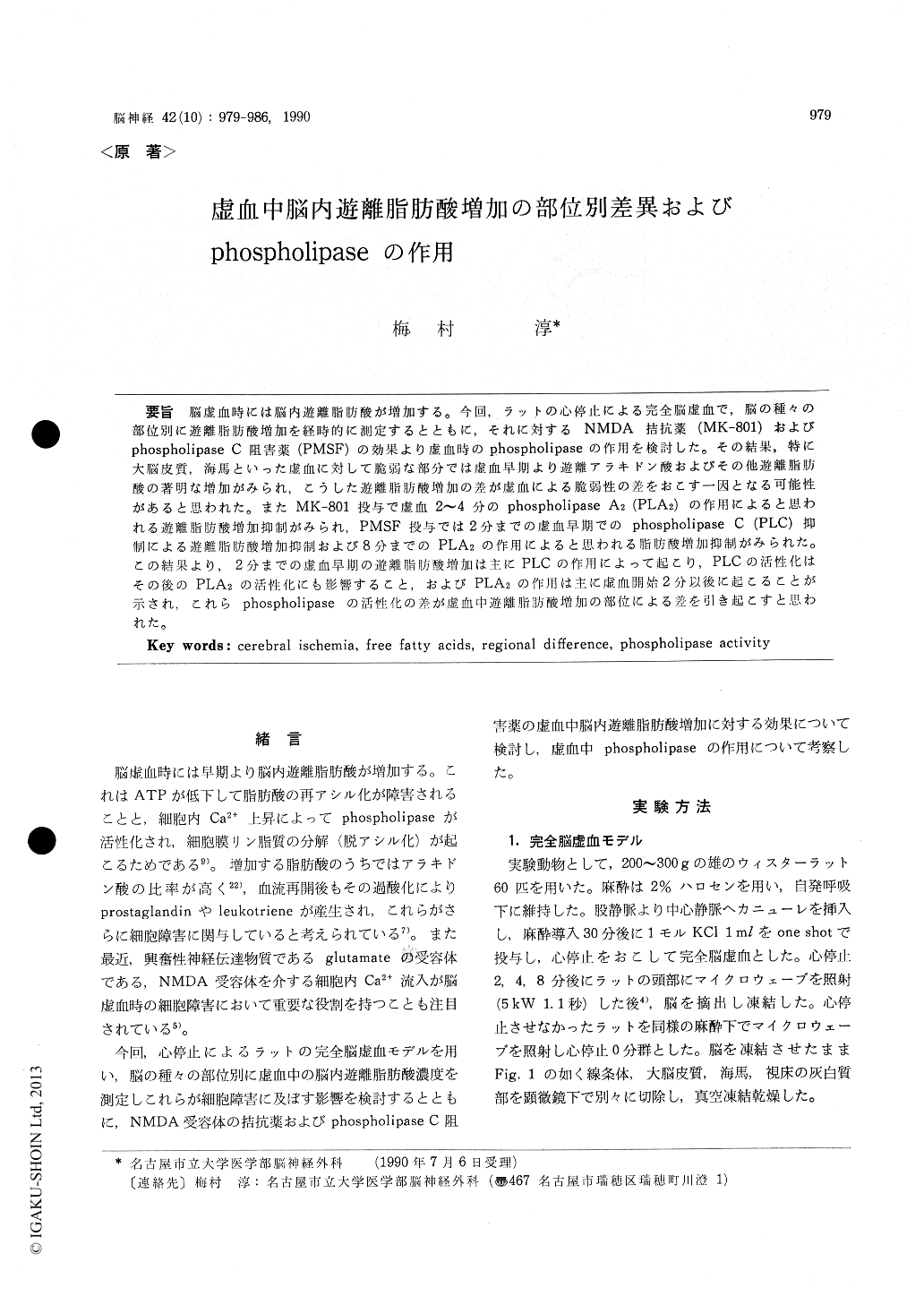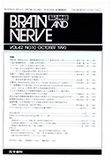Japanese
English
- 有料閲覧
- Abstract 文献概要
- 1ページ目 Look Inside
脳虚血時には脳内遊離脂肪酸が増加する。今回,ラットの心停止による完全脳虚血で,脳の種々の部位別に遊離脂肪酸増加を経時的に測定するとともに,それに対するNMDA拮抗薬(MK−801)およびphospholipase C阻害薬(PMSF)の効果より虚血時のphospholipaseの作用を検討した。その結果・特に大脳皮質,海馬といった虚血に対して脆弱な部分では虚血早期より遊離アラキドン酸およびその他遊離脂肪酸の著明な増加がみられ,こうした遊離脂肪酸増加の差が虚血による脆弱性の差をおこす一因となる可能性があると思われた。またMK−801投与で虚血2〜4分のphospholipase A2(PLA2)の作用によると思われる遊離脂肪酸増加抑制がみられ,PMSF投与では2分までの虚血早期でのphospholipase C(PLC)抑制による遊離脂肪酸増加抑制および8分までのPLA2の作用によると思われる脂肪酸増加抑制がみられた。この結果より,2分までの虚血早期の遊離脂肪酸増加は主にPLCの作用によって起こり,PLCの活性化はその後のPLA2の活性化にも影響すること,およびPLA2の作用は主に虚血開始2分以後に起こることが示され,これらphospholipaseの活性化の弟が虚血中遊離脂肪酸増加の部位による差を引き起こすと思われた。
It is well known that levels of free fatty acids (FFA) in the brain rapidly increase during ische-mia. FFA release during ischemia is generally due to the disturbance of reacylation by ATP depletion and deacylation from membrane phos-pholipids by the action of phospholipase. The present study examined the regional difference in brain FFA levels and also the action of phospho-lipase from the effect of NMDA antagonist (MK-801) and phospholipase C inhibitor (PMSF) on FFA release during complete ischemia in rat brain.
Complete brain ischemia was induced with car-diac arrest by intracardiac injection of KCI. A focused microwave was irradiated to the head of rats 0, 2, 4 and 8 minutes after cardiac arrest. Samples of the neocortex, striatum, hippocampus and thalamus were dissected. FFA were measured in each sample.
In the vulnerable regions such as neocortex, hippocampus and striatum, arachidonic acid and other FFA levels rapidly increased from the onset of ischemia. All FFA levels in the thalamus weresignificantly lower than those in the other regions during ischemia. The regional difference of FFA levels during ischemia seemed to be responsible for the regional difference of the vulnerability to ischemia.
MK-801 inhibited the FFA release mainly from phosphatidylcholine and phosphatidylethanolamine between 2 and 4 minutes of ischemia. On the other hand, PMSF inhibited the FFA release mainly from phosphatidylinositol during the first 2 minu-tes of ischemia and from phosphatidylcholine and phosphatidylethanolamine until 8 minutes of ische-mia.
These results show that FFA release during the first 2 minutes of ischemia can be attributed mostly to the action of phospholipase C, that the activa-tion of phospholipase C influences the activation of phospholipase A2 in the subsequent course, and that the action of phospholipase A2 is predominan-tly exerted after 2 minutes of ischemia.
The regional differences of phospholipase acti-vity seemed to be responsible for those of FFA levels during ischemia.

Copyright © 1990, Igaku-Shoin Ltd. All rights reserved.


